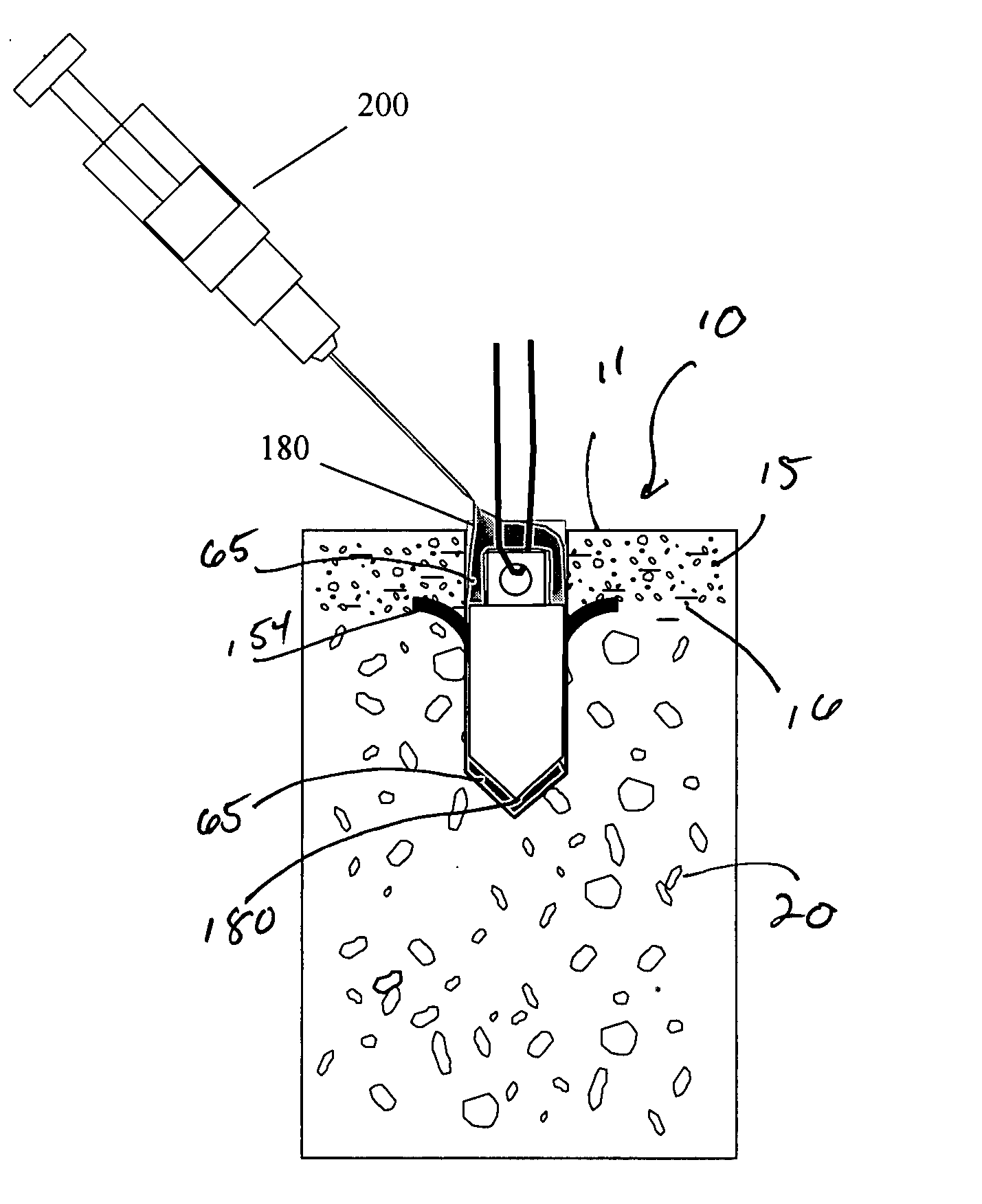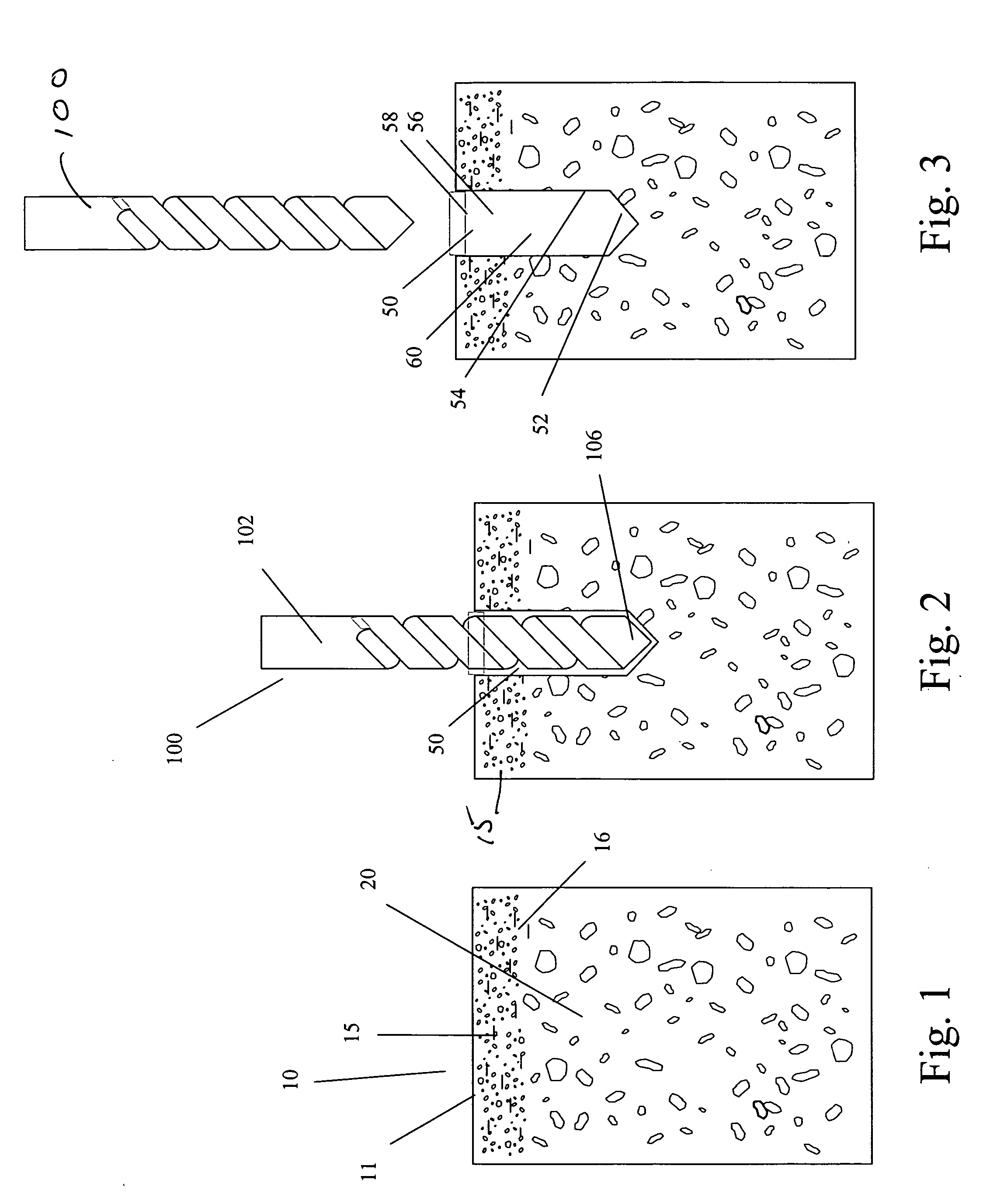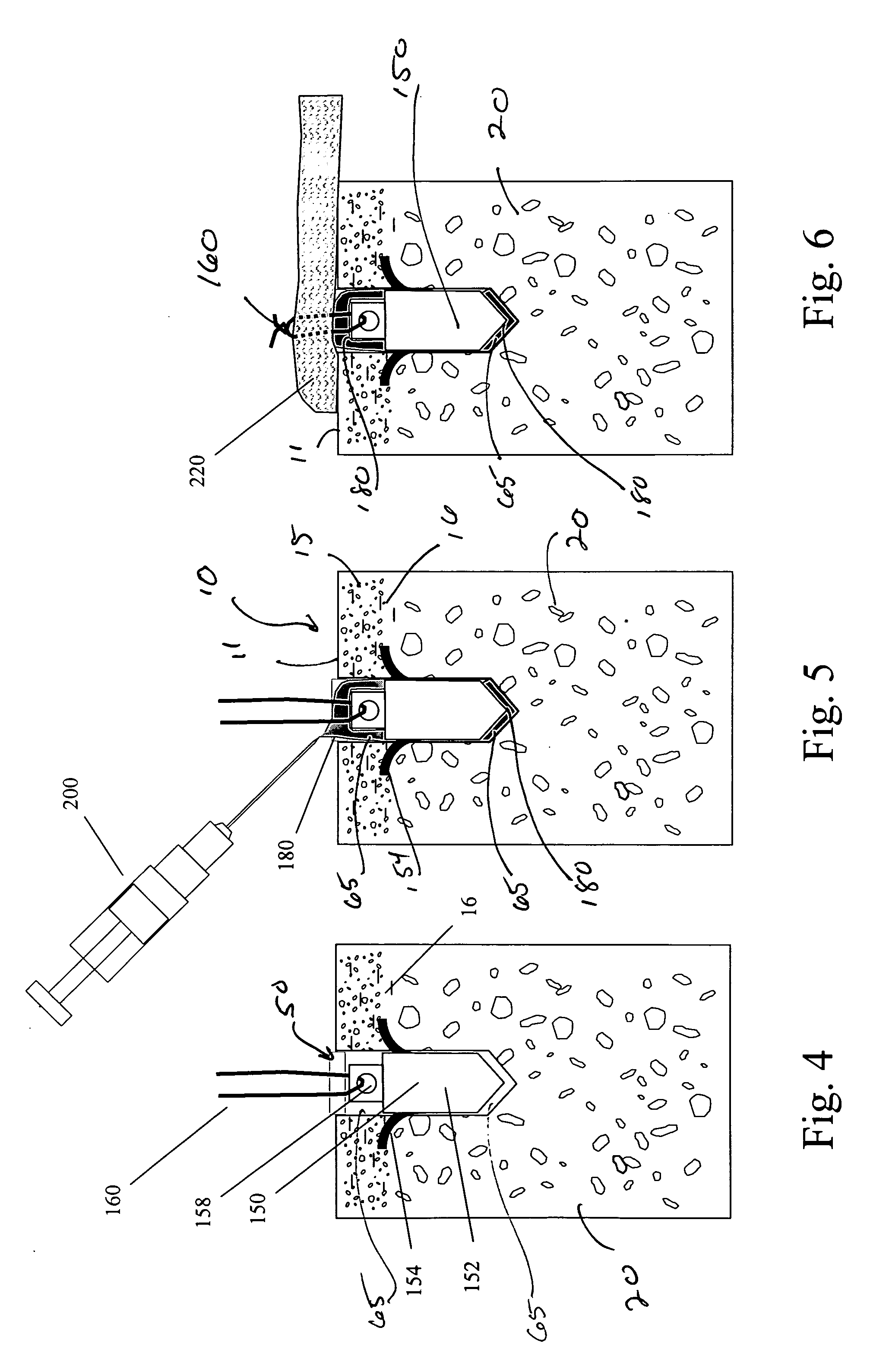Suture anchor and void filler combination
a technology of suture anchor and void filler, which is applied in the field of sports medicine, can solve the problems of increasing the duration of surgical procedure, failure of reattachment procedure, and inability to leave a bone void,
- Summary
- Abstract
- Description
- Claims
- Application Information
AI Technical Summary
Benefits of technology
Problems solved by technology
Method used
Image
Examples
example 1
Wet Granulation Method
[0032] A granulated void filler of the present invention was prepared in the following manner. Hydroxyethylcellulose (HEC) (Natrosol 250HHR; Hercules, Wilmington, Del.) and tricalcium phosphate (TCP) (Tri-tab; Rhodia, Cranbury, N.J.) were sieved respectively through a 45 mesh screen. A 1.8 gram quantity of the sieved TCP was dry-blended with 2.0 grams of lidocaine. A 1 milliliter aliquot of isopropanol was added to the dry-blended mixture dissolving the lidocaine (Sigma-Aldrich) and suspending the TCP particles. A 1.8 gram quantity of the sieved HEC was added, in small quantities, to this mixture, blending with a spatula after each addition. Mixing was continued until appearance was uniform. The granulated mixture was transferred to an aluminum pie pan and placed on a bench top to air dry for 3 hours. Further drying occurred overnight using a vacuum oven set at 40° C. After drying the mixture was in the form of white free-flowing granules. Granules can be used...
example 2
Melt Processing Method
[0033] A void filler useful in the practice of the present invention was prepared in the following manner. Hydroxyethylcellulose (HEC) (Natrosol 250HHR; Hercules, Wilmington, Del.) and tricalcium phosphate (TCP) (Tri-tab; Rhodia, Cranbury, N.J.) were sieved respectively through a 45 mesh screen. A 0.5 gram quantity of sieved TCP was dry-blended with 2.0 grams of lidocaine (Sigma-Aldrich), and 1 gram of the sieved HEC. 1.5 g of poly (caprolactone co-dioxanone) (PCL / PDS) (Ethicon; Somerville, N.J.) in the mole ratio of 95 / 5 was weighed out. A twin screw extruder (DACA Instruments; Goleta, Calif.) was heated to 85° C. and half of the PCL / PDS was fed into the extruder. Polymer was allowed to melt and mix for a few minutes. The dry blend was added slowly to the extruder. Then the remaining portion of the PCL / PDS was added. The mixture was processed in the extruder for 5 minutes under a nitrogen blanket. The load initially was 500-600 N but reduced to approximately ...
example 3
Direct Compression of Powder Method
[0034] A pelletized form of a void filler useful in the practice of the present invention was made in the following manner. Three grams of TCP (Tri-tab; Rhodia, Cranbury, N.J.) and three grams of HEC (Natrosol 250HHR; Hercules, Wilmington, Del.) were mixed in a 200 milliliter glass beaker with a spatula for five minutes. The powder mixture was milled in an IR ball mill (Spectra-Tech, Inc.) in 0.4 gram quantities for 30 seconds. A 0.2 gram amount of powder was placed in an IR pellet maker (Spectra-Tech, Inc.) and compressed at room temperature in a press (Fred S. Carver, Inc.; Summit, N.J.) using a load of 1000 lbs for one minute. Pellet was removed from pellet maker.
PUM
 Login to View More
Login to View More Abstract
Description
Claims
Application Information
 Login to View More
Login to View More - R&D
- Intellectual Property
- Life Sciences
- Materials
- Tech Scout
- Unparalleled Data Quality
- Higher Quality Content
- 60% Fewer Hallucinations
Browse by: Latest US Patents, China's latest patents, Technical Efficacy Thesaurus, Application Domain, Technology Topic, Popular Technical Reports.
© 2025 PatSnap. All rights reserved.Legal|Privacy policy|Modern Slavery Act Transparency Statement|Sitemap|About US| Contact US: help@patsnap.com



